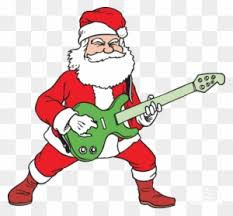Geography 9: Greater Manchester (Noasis)
- jamesgeraghty
- Oct 10, 2024
- 6 min read
There have been two waves of musical greatness from the city at the western end of the M62 motorway (Liverpool, obvs), first in the early 1960s and then again as the 70s turned into the 80s. But what of its near neighbour, just a 30 mile journey to the east?

Manchester, like Liverpool, was a major nineteenth century industrial city; the former for textiles, the latter as a key port. Liverpool was a natural musical hub, as merchant sailors brought in boxes full of blues and rock roll records in the late 1950s and early 60s. But those influences quickly seeped across the Lancastrian plains, and Manchester was not far behind in developing its own scene.
In this list you will see that 60s burgeoning blues and pop scene reflected, but also its later impacts on genres like punk and of course, Madchester.
And we have done it all without reference to those two oafish brothers - and of course, there are about twenty other acts that we could have mentioned, but ran out of room....
1. The Stone Roses: I Wanna Be Adored
We start with one of the original players (some may say, inventors) in the so-called Madchester scene. The Stone Roses formed around the Altrincham duo of Ian Brown and John Squire, who had been at school together, and also briefly in a punk band inspired by The Clash. By the time their debut, self-titled album came out, they had already put in six years of hard work. I Wanna Be Adored is the opening track, with its long (1.5 minute) atmospheric intro, before Brown's arrogant swagger and self-aggrandising lyrics kick in. It is one of the defining moments of that whole scene, and made it to number 17 on NMEs Greatest Indie Anthems Of All Time list.
I Wanna Be Adored (Official music video)
2. The Hollies: Bus Stop

Now we go back to the beginning and a band that paved the way for the first big Manchester music scene. The band was formed in 1962 by Alan Clarke and Graham Nash, who were best friends from primary school and who had started out as a skiffle duo, with a big Everly Brother's influence. The Hollies morphed from the ashes of The Deltas, and based their sound on that emerging Merseybeat sound. Bus Stop was the single, in 1966, that finally gave them their first US Top10 hit. It was written by Graham Gouldman, later of 10CC, who had also written some other big 60s hits (including No Milk Today for Herman's Hermits and For Your Love for the Yardbirds).
Bus Stop (Live on Beat Club, 1967)
3. The Charlatans: The Only One I Know

We'll keep with the 60s theme, albeit in a slightly different way. One of defining characteristics of the Manchester bands that emerged in the late 1980s, was a huge leaning on many of the sounds from the sixties (especially the jangling guitars and big, Hammond organ sound). With this, The Charlatans second single, (which reached UK number 9) it was less a 60s influence and more some quite heavy borrowing. Some of the lyrics are lifted directly from The Byrd's Everybody's Been Burned, while a chunk of the organ riff comes from Deep Purple's Hush. It has also been pointed out that the guitar part is quite similar to You Keep Me Hangin' On by The Supremes.
The Only One I Know (Live on the great Seattle radio station, KEXP, 2023)
4. James: Runaground
James were a mainstay of the college circuit in the late 80s and early 90s, who made their breakthrough into the big time, when Sit Down was re-released in 1991, reaching UK number 2. After the Whiplash album in 1997, tensions and in-fighting in the band seemed to make the writing process much harder. Runaground was one of two previously unreleased tracks that were ready (with Destiny Calling) when they ended up releasing The Best Of album as a bit of a stopgap in 1998. They did end up resolving their personal issues and the next album, Millionaires, came out the following year.
Runaground (Official music video)
5. John Mayall's Bluesbreakers: I'm Your Witchdoctor

Although he was born in Macclesfield (which is outside Greater Manchester), John Mayall grew up in Cheadle Hulme (which is), the son of a guitar player who played the local pubs. He did his National Service in Korea and bought his first guitar in Japan, before attending Manchester College of Art on this return (he would work as an art designer and eventually design much of his own sleeve art). He moved his band down to London in 1963, who became the Bluesbreakers - eventually including John McVie (later of Fleetwood Mac) - backed John Lee Hooker on his 64 UK tour. Eric Clapton, Jack Bruce and Peter Green would all also feature at various times in the bands mid-60s line-up. I'm Your Witchdoctor includes Clapton, McVie and Hughie Flint and was produced by a young Jimmy Page and was later covered by Them and Motorhead.
I'm Your Witchdoctor (Audio only)
6. Wayne Fontana & The Mindbenders: The Game Of Love

The Mindbenders formed in Manchester in June 1963 by Wayne Fontana and featuring Bob Lang, Ric Rothwell and Eric Stewart (later of 10CC), The bands name was inspired by the Dirk Bogarde film The Mind Benders. Fontana would end up leaving in 1965, but rest of the Mindbenders would continue with Stewart on vocals, scoring a big hit with Groovy Kind Of Love. The Game of Love would make the top spot in the US and the two spot in the UK.
The Game Of Love (Fantastic live version at the 1965 NME Poll Winners concert)
7. Buzzcocks: What Do I Get?
What Do I Get? was the second (non-album) single for Manchester pop-punk pioneers, Buzzcocks, giving them their first hit, reaching UK number 37. They had formed in 1975 when Howard Trafford (Devoto) invited Peter McNeish (Shelley) to join his band playing Velvet Underground songs. The band expanded in early 76, becoming Buzzcocks, after they had read a review of Rock Follies in Time Out, which said "It's the buzz, cock!" (Buzz = the excitement of playing live; cock = northern slang for friend). They thought it sounded like a good punk band name, and also had some slight sexual innuendo to it. Devoto left in March 1977 to form one of the key early post-punk bands, Magazine.
What Do I Get? (Official music video)
8. The Smiths: What Difference Does It Make?
First, we need to try and separate the Morrissey we know now, from the man who wrote wry, clever lyrics back in the day - and also, do it for Johnny. Johnny Marr is generally considered to be one of the pick of British guitarists to emerge in the 1980s, and while never flashy, boy, he knows how to write a hook. The great arpeggiated riff on this early single, is backed nicely by Mike Joyce's drum patterns - with young Stephen Morrissey wailing along in the background. The song title comes from Ray Smith, a character in Kerouac's Dharma Bums, who repeatedly says "What difference does it make?"
What Difference Does It Make? (Live in Derby, 1984)
9. Thin Lizzy: Johnny The Fox Meets Jimmy The Weed

What a great excuse to play a bit of classic, 70s funky rock! Thin Lizzy are Irish though, right? Well yes, that's true, but main man Phil Lynott's mum (Philomena) ran the Clifton Grange Hotel in Whalley Range (just around the corner from Old Trafford) from 1966 to 1980. Phil would often visit there, and the colourful characters that frequented it gave him inspiration for several of their classic tunes, including The Boys Are Back In Town. This track one comes from seventh album, Johnny The Fox (1976), which was recorded while Lynott was recovering from hepatitis. Johnny and Jimmy were both actual real people from Manchester, who were part of a gang of thieves (although not drug dealers as depicted in the lyrics).
Johnny The Fox Meets The Jimmy The Weed (Official music video)
10 Joy Division: Atmosphere
This song had been released in different packages in Germany and France in early 1980, but was re-released in late May as a 12" by Factory Records (with a different version of She's Lost Control as the B-Side), following Ian Curtis's suicide on the 18th. It would eventually come with an eerie black and white video, with black cloaked people carrying around pictures of the band, which came out when the song was released again in 1988. The video was directed by Anton Corbijn (he also directed the Joy Division biopic, Control). Although the song had been recorded long before his death, his mental struggles were already well known - and the songs release after his death has, as Ned Raggett said in AllMusic, provided "a feeling of a requiem here, an awesome musical farewell."



Comments